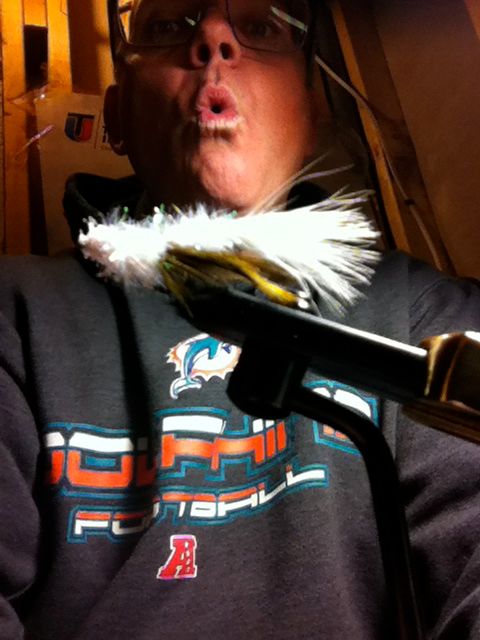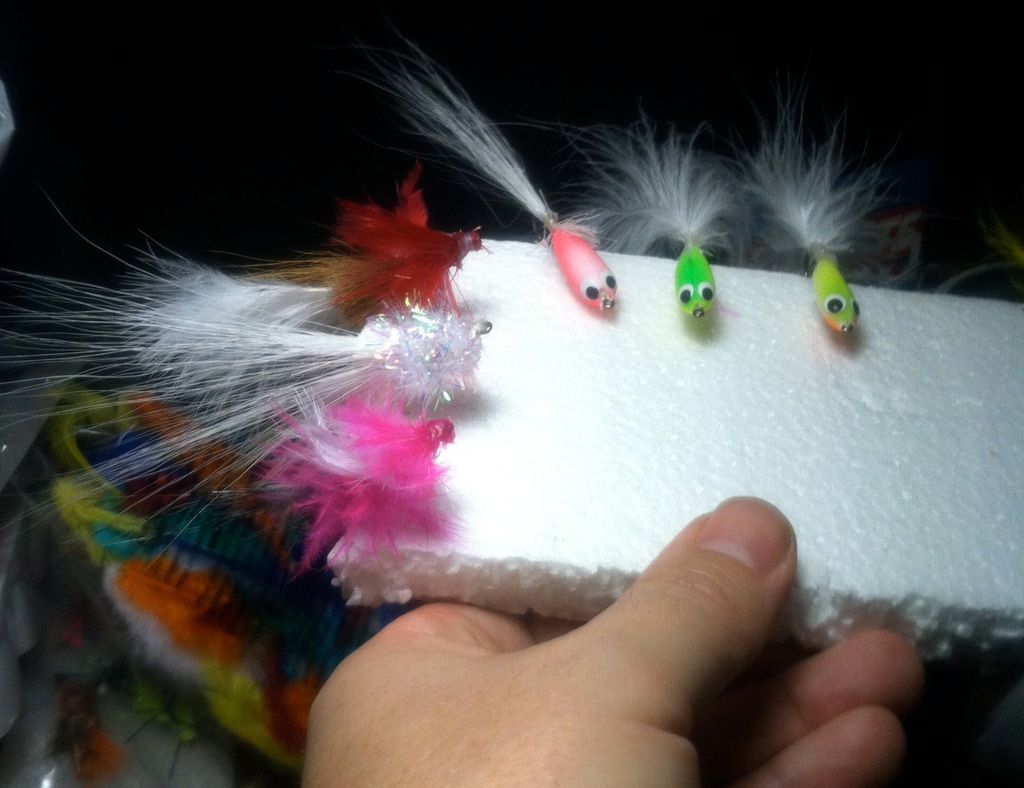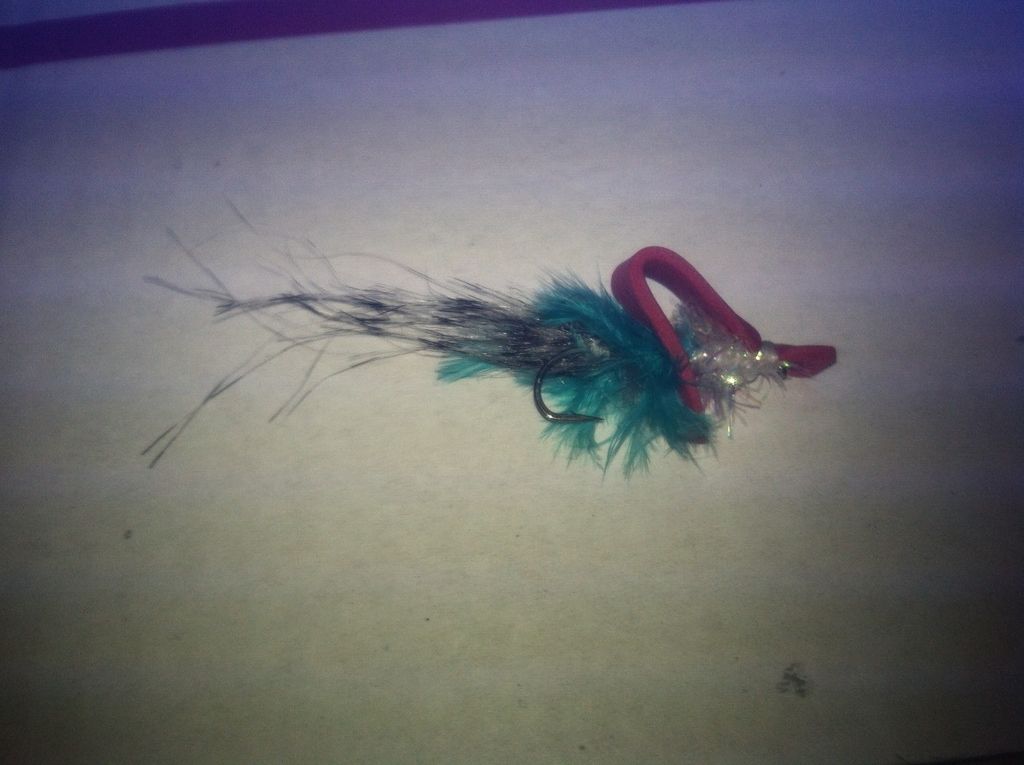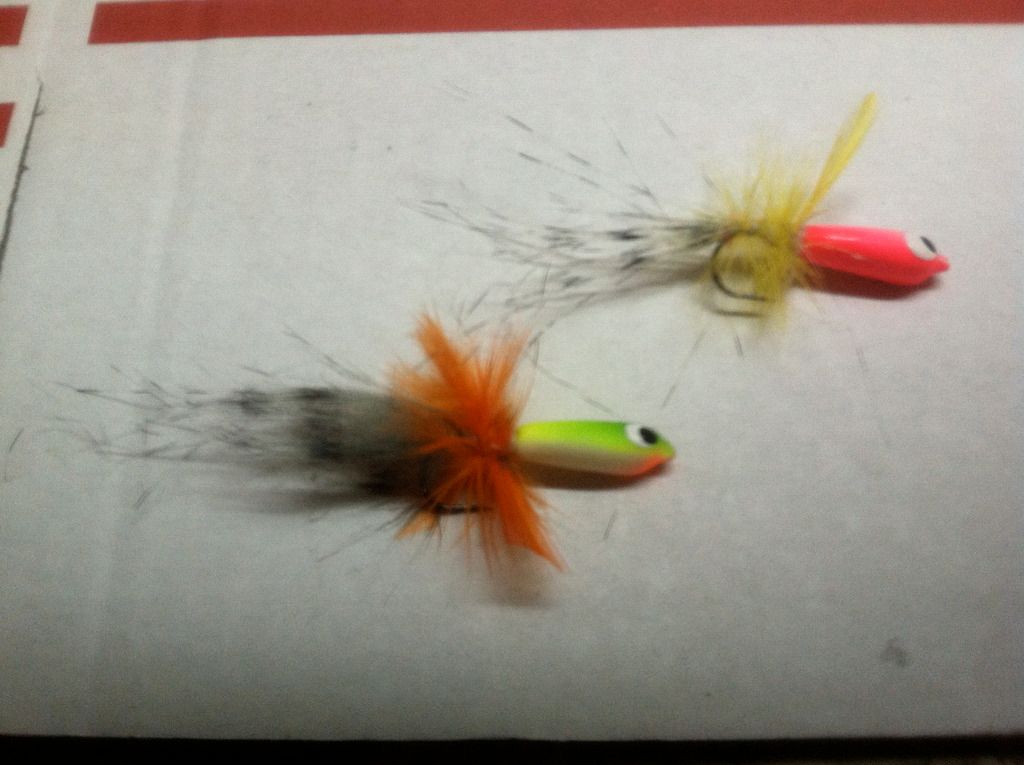Announcement
Collapse
No announcement yet.
Gonna Try To Make Some of These Floaters for Potomac Smallmouth
Collapse
X
-
Mark is 100% dead-on with his advice.
Here are a few quick pictures to try to support what he said:
IMG_0334-2.jpg
Here is the Danville thread I use on the spinner jigs. It's the 210 denier as Mark mentions.
IMG_0337.jpg
Here are two vastly different size lures: a size 16 nymph, and a size 8/0 jig head.
When you are tying something really tiny, every wrap of thread and it's placement is important. That's what the extra thin thread is used for.
On the big stuff, not so much.
IMG_0367-2.jpg
In my younger days, I used to tie this size! Mustad size 20 dry fly hook!
IMG_0341.jpg
This is a "home made" half hitch tool made from part of an old ball point pen. 5-6 half hitches are as good as a whip finish.
IMG_0345.jpg
Just slide the thread down over the eye of the hook to finish off the head.
IMG_0353.jpg
This is how I hand tie a whip finish.
IMG_0362.jpg
It's a little harder with the spinner jig because the wire frame is in the way and the hook is pointing up.
IMG_0356.jpg
IMG_0365.jpg
Sally Hansen does a real nice job and gives you a nice buzz when you do 20 at a time!
It takes a while to develop the repetitive skills, it becomes a lot easier after the first 500 or so, because you don't have to think about everything you are doing, it becomes automatic.Last edited by bignose; 12-25-2016, 06:43 PM.
Comment
-
Third try-me and the computer are arguing today. I would have put this reply down in the General Thread, but that seems to be the daily playground of some knuckle headed hacker, lately.
Here is how I tie a whip finish and a half hitch head on my flies. I tried to reverse the photos so they look normal to a right handed tier, but I kept getting them all sort of kattyywhampus.
IMG_0380.jpg
I start by forming a crossover loop between my index and middle finger.
IMG_0381.jpg
I take the loop over the top of the hook by bringing the loop on my middle finger around and behind the hook.
IMG_0382.jpg
Observe that the first loop is formed and I continue to twirl my fingers around.
IMG_0383.jpg
Notice how I cross my fingers to form the new loop. I deliberately did not snug up the first loop so you can see how it shapes up.
IMG_0384.jpg
Second loop is carried over and snugged up.
IMG_0386.jpg
I cross the line by twisting my fingers, form another loop and will carry that over the top using my middle finger.
IMG_0392.jpg
The next loop is going around. I repeat this 7 times and then cut off the thread after snugging up. Cut the thread, don't break it off. You want to know where the end of your thread is, and you won't if you break it off.
IMG_0397.jpg
To tie a half hitch, I use the tool I showed above. Here, I have tied a generic Wooly Bugger pattern, that could be used for Smallies, Perch, etc., on a 1/0 saltwater hook for clarity. I have used this tool for the tiniest of flies.
IMG_0398.jpg
I start to wrap a loop around the tool. Notice that I have slightly flared the end of the pen so the thread doesn't slip off, it has to be eased up over the flare and onto the eye.
IMG_0411.jpg
The loop is formed and ready to be slipped into place, and snugged up. This tool allows you to precisely place the thread where you want it, important with a small fly.
After applying 5-7 of these, cut off, and cement in place with Sally Hansen.Last edited by bignose; 12-26-2016, 03:04 PM.
Comment
-
Comment
-
-
Thanks Harry,
Good find.
In addition to discussing the relative strengths of tying threads, the video illustrates how well flat threads lay on the hook.
I prefer flat threads because I can tie nicely tapered heads with them and they don't build up too fast when wrapping a jig.
But of course, fish don't care in the slightest about those nuances.Mark
Pasadena, MD
Slate Hobie Revolution 13
Hidden Oak Native Ultimate 12
Lizard Lick Native Ultimate FX Pro
Comment
-
Smallmouth 05-31-13.jpgThere are a lot of tricks in Fly Tying. I tend to tie bullet-proof flies. One trick for threat is that I use to get kevlar thread for tying. You can't break that stuff and if you aren't careful it will cut the hell out of you. You can really bind down on materials and it is great if you are tying deer hair flies.
I have done some smallie fishing on the Potomac River. It is an amazing fishery. I have lost some HUGE fish and landed some pretty big ones. I lost one two years ago that had to be 22" long.
I love fishing top water but my go-to flies are streamers. I switch flies depending where I am fishing.
If you target BIG smallies then find some deeper water with large rocks with current moving through it; boulder water. This is where the big ones live during the spring, summer, and fall. I like throwing a Harry's Madtop Sculpin here. This has yielded me a 20" smallmouth once and a lot of very large smallies too. At the head and tail of the pool I like fishing a Shenk's White Streamer. Another newer streamer that I have been tying is a Shannon's Streamer (this is a HUGE fly and you need a large rod, like an 8 weight, just to cast it).
You are right on target with tying a yellow fly for the Potomac top water. It is a weird thing but I have found that in the Potomac and Rappahannock yellow is the best top water color (maybe because of small frogs that the bass feed on a lot) and on the Shenandoah throw a Carolina Blue fly (they feed on damsel flies there).
I would suggest using a Whip Finishing tool. They are relatively inexpensive and they work well. I tend to whip finish at least twice. I also thread glue the heck out of that area.
Comment
-
You normally do not need Kevlar thread and it does not do well with knots so you have to add lots of glue. Also i have heard of tiers cutting deer hair while cranking down on the Kevlar. Flat waxed is what I normally use on all my salt flies and 6/0 or flymaster plus for smallmouth flies. But if it works for you then go for it!
Comment
-
-
-
They'll work.
Goodness only knows why fish bite some of our creations.
That's why I've often questioned precise matching of the so-called hatch for aggressive predators like bass in a feeding mood.
Sometimes it helps, like during a white miller hatch.
Both other times it doesn't matter.
I've caught many on flies that look like nothing that swims in nature.Mark
Pasadena, MD
Slate Hobie Revolution 13
Hidden Oak Native Ultimate 12
Lizard Lick Native Ultimate FX Pro
Comment




Comment